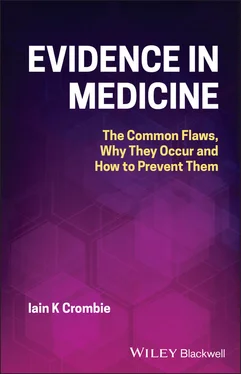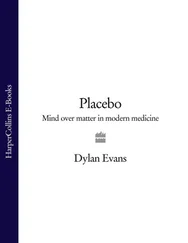CASTING LOTS AND TREATMENT ALLOCATION
Comparing similar groups of patients was an important step forward in the evaluation of treatments, but it leaves open the possibility that the groups may have differed on important factors that were not measured. Further, a subconscious bias in the doctor allocating patients to treatments could influence the way individuals were assigned to groups (e.g. the slightly sicker ones might be preferentially assigned to one group). An alternative approach, which prevents this bias, is to allocate individuals to treatments in a truly random way, so that the final groups will be balanced on all factors, whether measured or not.
The idea that some form of randomisation should be used to allocate patients to treatment groups was proposed in the 1640s. Joan Baptista van Helmont, a Flemish chemist, alchemist and physician, recommended this method to evaluate the effectiveness of bloodletting [33]. He suggested dividing up to 500 patients into 2 groups, then casting lots (equivalent to tossing a coin) to decide which group would be given the conventional therapy (bloodletting) and which would receive van Helmont's own treatment. A notable feature of the trial design is that the outcome would be decided by the number of funerals that occurred in the two groups. The experiment was not carried out. (The proposed use of an objective outcome measure such as this is unusual for its time.)
One method of randomised allocation was used in 1848 by Thomas Graham Balfour to investigate whether homeopathic belladonna could prevent scarlet fever. Balfour identified 151 boys who had not had the disease, and ‘divided them into two sections, taking them alternately from the list, to prevent the imputation of selection’ [34]. Balfour recognised that if he had to decide which boys were allocated to each group, his choices might be biased. (Alternate selection from a list is essentially a method of randomisation, as the factors which are related to dying from scarlet fever, will be randomly scattered throughout the list.) The study showed that exactly two children in each group developed scarlet fever, leading him to conclude that ‘the numbers are too small to justify deductions as to the prophylactic power of belladonna’ [34], a commendably careful interpretation of the findings.
Instead of alternate selection from a list, patients could be allocated to treatments by the date of their admission to hospital. This method was used by the Danish physician Johannes Fibiger in 1896–1897 [35] to evaluate the effectiveness of a serum treatment for diphtheria. Thus, patients admitted to hospital on one day received serum and those on the next day were untreated. The outcome was persuasive: only 8 of 239 patients in the serum group died, compared to 30 of the 245 controls.
The use of alternate allocation began to gain popularity in the first few decades of the twentieth century because it prevented bias in the assignment of patients to treatments. These research studies were conducted in both the United States and the UK, with patients being randomised by the order of their attendance at a healthcare facility [36–39]. These trials signalled the growing recognition of the importance of achieving comparable groups.
RANDOM NUMBERS FOR TREATMENT ALLOCATION
A landmark series of three trials, conducted under the auspices of the UK Medical Research Council, used random numbers to allocate patients to treatments. This methodological advance was proposed by the medical statistician Professor (later Sir) Austin Bradford Hill [40]. It was first used in a large field trial that assessed the effectiveness of a vaccine for whooping cough [41]. Although this study began in 1944, it was not published until 1951. The second trial, of streptomycin for pulmonary tuberculosis, became the most highly acclaimed study in the history of treatment evaluation. It began in 1946, but was the first to be published, in 1948 [42]. The third trial involved a large‐scale field trial of an antihistaminic drug (thonzylamine) for the prevention of the common cold [43].
As well as being published first, the streptomycin trial provided a major advance in the treatment of a feared disease, tuberculosis: it reduced the fatality rate at six months from 27% to 7% and also reduced the severity of disease among survivors. An editorial that accompanied the paper identified the advantage of individual randomisation over alternate allocation: it prevented a patient being included or rejected, based on whether the next treatment was to be antibiotic or control [44]. For example, if the doctor thought that the drug would not be effective in seriously ill patients, they might not be included in the study if they were scheduled to receive the active treatment. This would only need to happen a few times to bias the results of the study.
In addition to the use of random numbers to allocate patients to treatments, these three trials stand out for two other reasons. Patients were recruited from multiple centres to provide sufficient participants to be able to draw firm conclusions. The researchers also made considerable efforts to ensure that the participants, and the clinicians measuring the outcomes, were unaware of which treatment the patients received. This prevented bias in the reporting of symptoms by participants, and by those recording the outcomes: in modern terminology, it was double blind.
The landmark streptomycin trial in tuberculosis was followed by another study on pulmonary tuberculosis, published two years later [45]. It compared three treatments: streptomycin, another drug, para‐amino‐salicylic acid (PAS), and a combination of these two drugs. The same methodology was used as in the first streptomycin trial. The combination therapy had the best outcome, with streptomycin coming second. More importantly the combined treatment led to a much lower frequency of bacterial resistance to streptomycin. This study has been credited with leading to the maxim ‘never treat active tuberculosis with a single agent’, which is now the standard for managing this disease [46]. The clinical benefits apart, this set of four rigorous studies supported by the Medical Research Council inaugurated the era of high quality clinical trials.
A major concern of several trials in the middle of the twentieth century was to ensure that the patients and clinical observers were unaware of how treatments were allocated [39, 41, 43]. This would prevent knowledge of who received which treatment from influencing the outcome of the study. The idea was not new; it featured in studies to evaluate a treatment called animal magnetism. This treatment was championed in the late 1700s by Franz Anton Mesmer, who believed he could impart magnetic energy and thereby cure a wide range of illnesses [47]. Mesmer achieved great fame, and a lucrative medical practice in Paris. This popularity was of such concern to other doctors, and to the government, that they persuaded Louis XVI to establish a Royal Commission to evaluate the claims of cures and dramatic effects [47, 48]. The Commission conducted a series of studies in which participants either thought they were being magnetised (when they were not), or thought they were not subjected to magnetism (when they were). The findings were convincing. Participants only reported benefits when they (falsely) believed they were being treated: ‘the imagination is the real cause of the effects attributed to magnetism’ [47]. Following publication of the Commission's report, Mesmer was ridiculed, and animal magnetism was abandoned in France.
A more recent example of the importance of blinding is the evaluation of a surgical technique, internal‐mammary artery‐ligation, for the relief of angina symptoms. Several reports in the 1950s had claimed that the operation provided considerable relief of symptoms [49, 50]. This prompted two groups of researchers to carry out controlled trials to evaluate the effectiveness of the surgery. Patients were randomly allocated to have artery ligation, or to a control group which received a sham operation involving only a skin incision. The patients, and the cardiologists who evaluated the outcomes, were blind to treatment group. The ligation operation provided no benefit, as most patients in both the treatment group and in the control group reported significant improvement in symptoms [49, 50]. The authors concluded that these claims were most likely a psychological response to undergoing surgery.
Читать дальше












